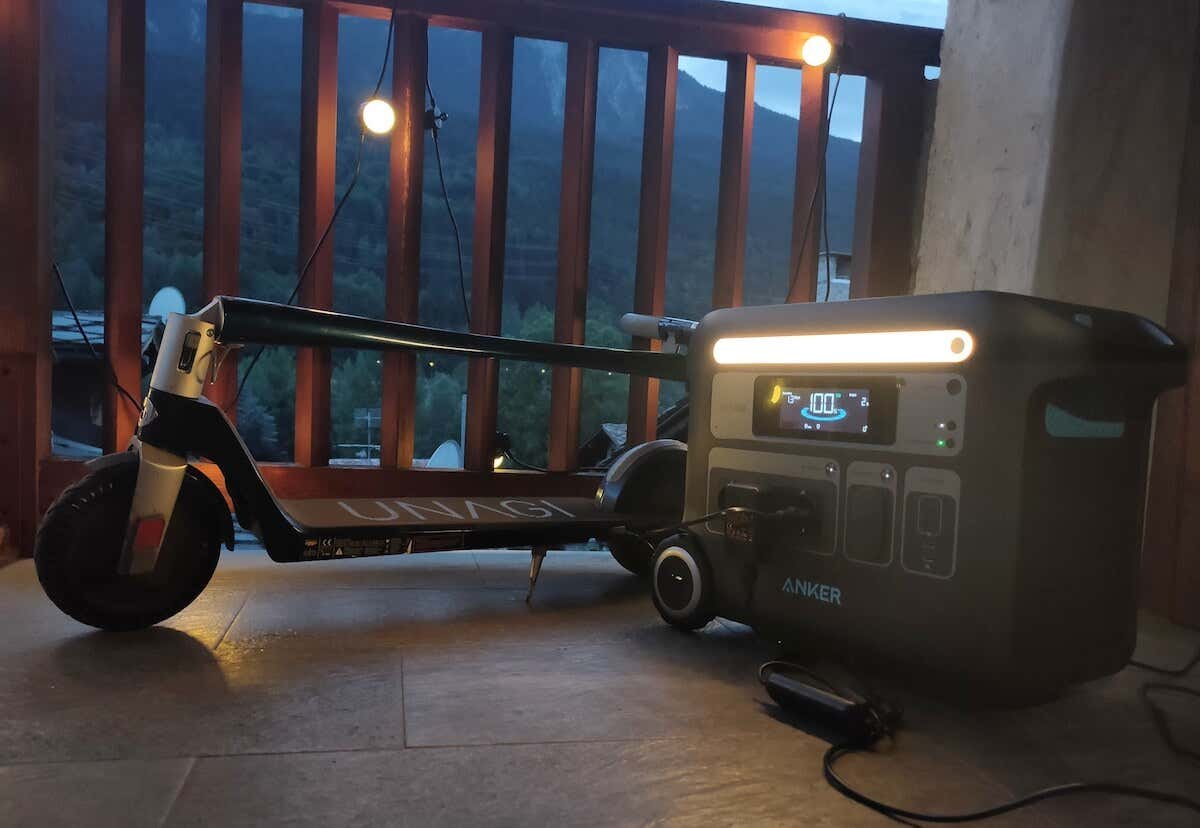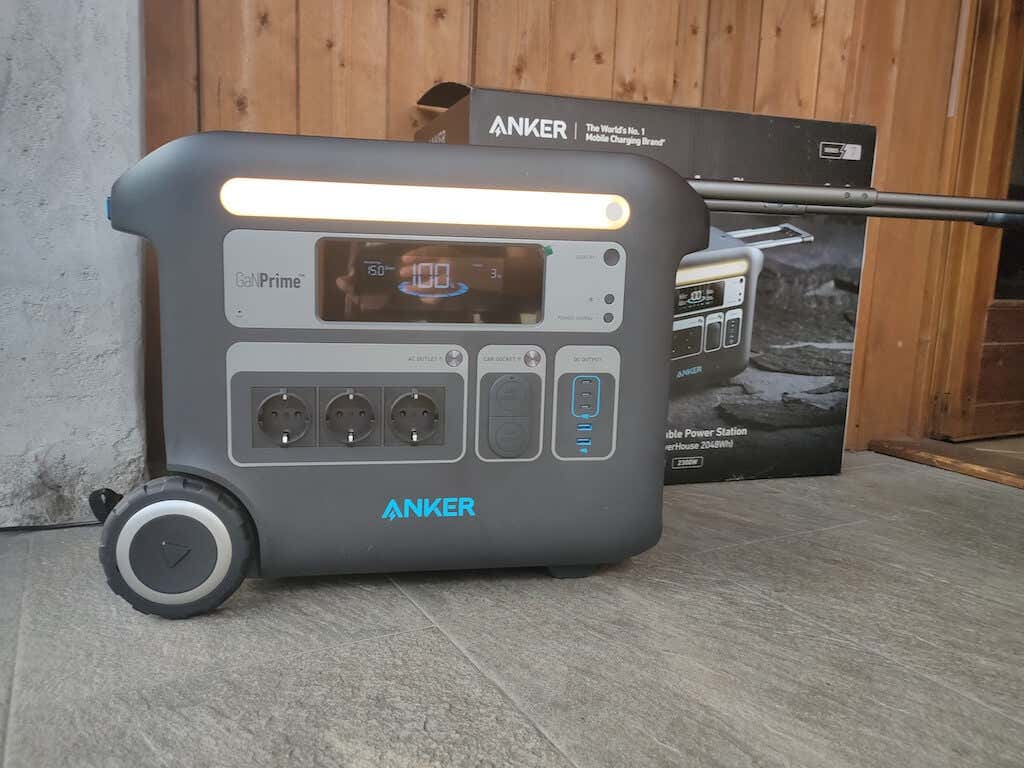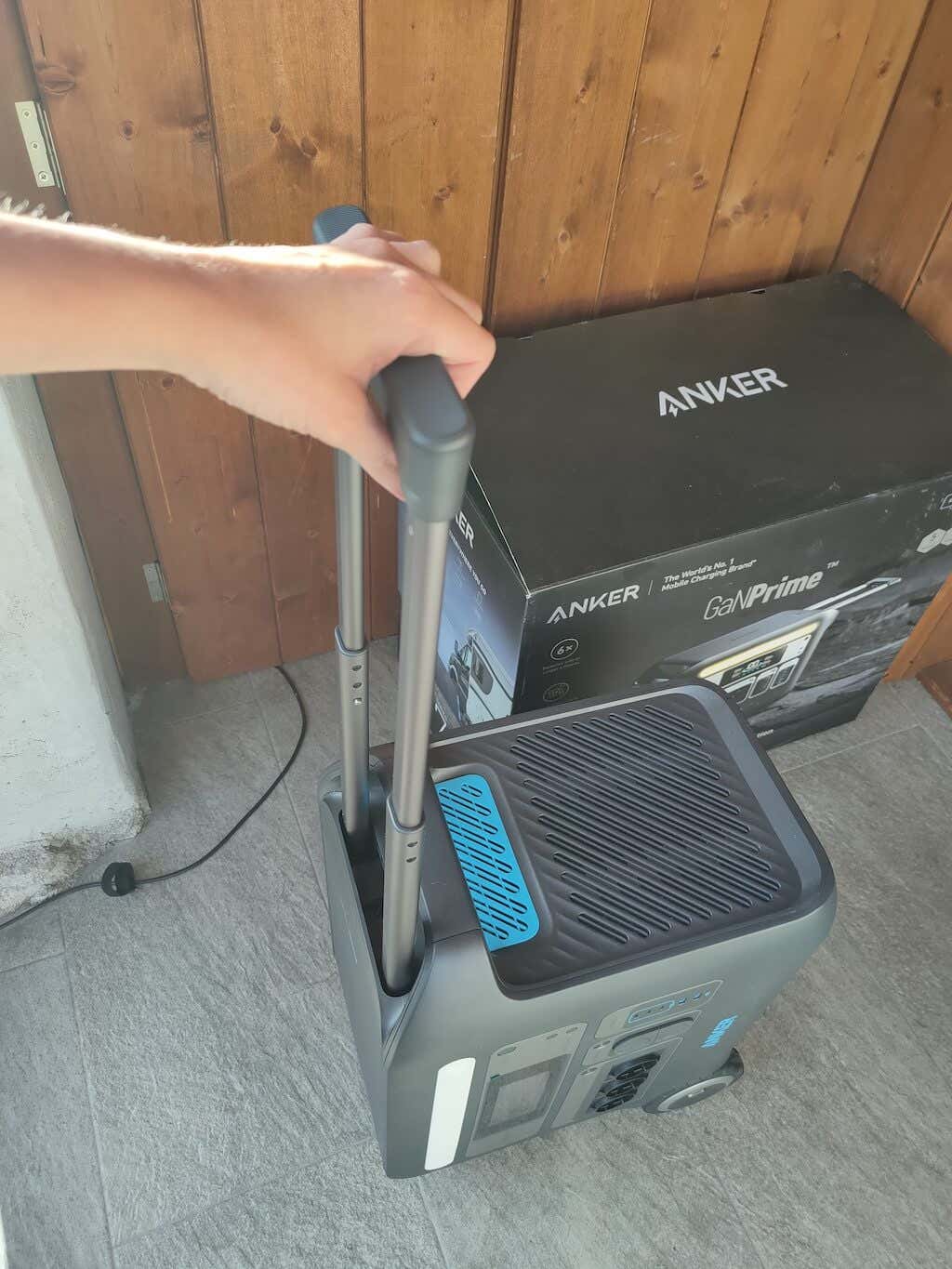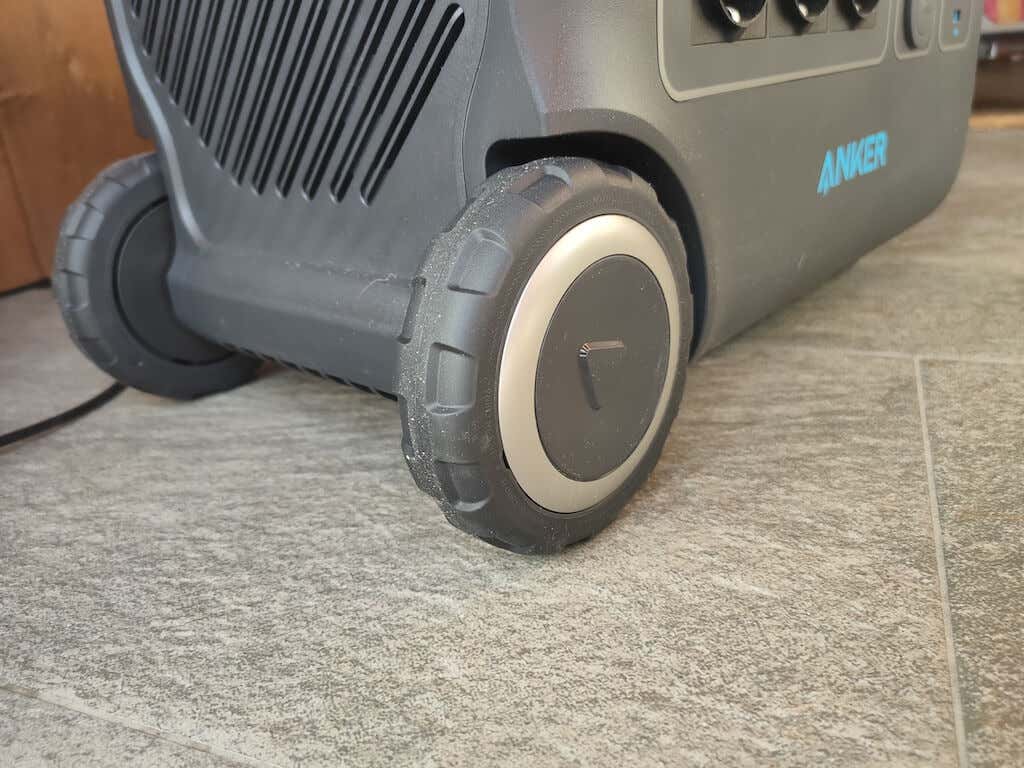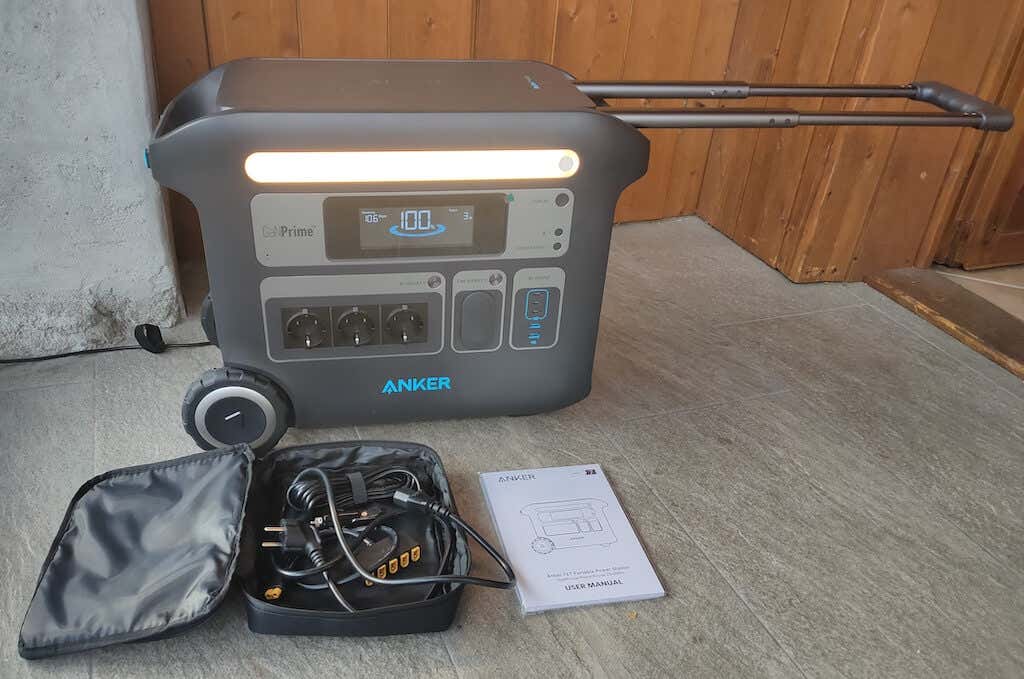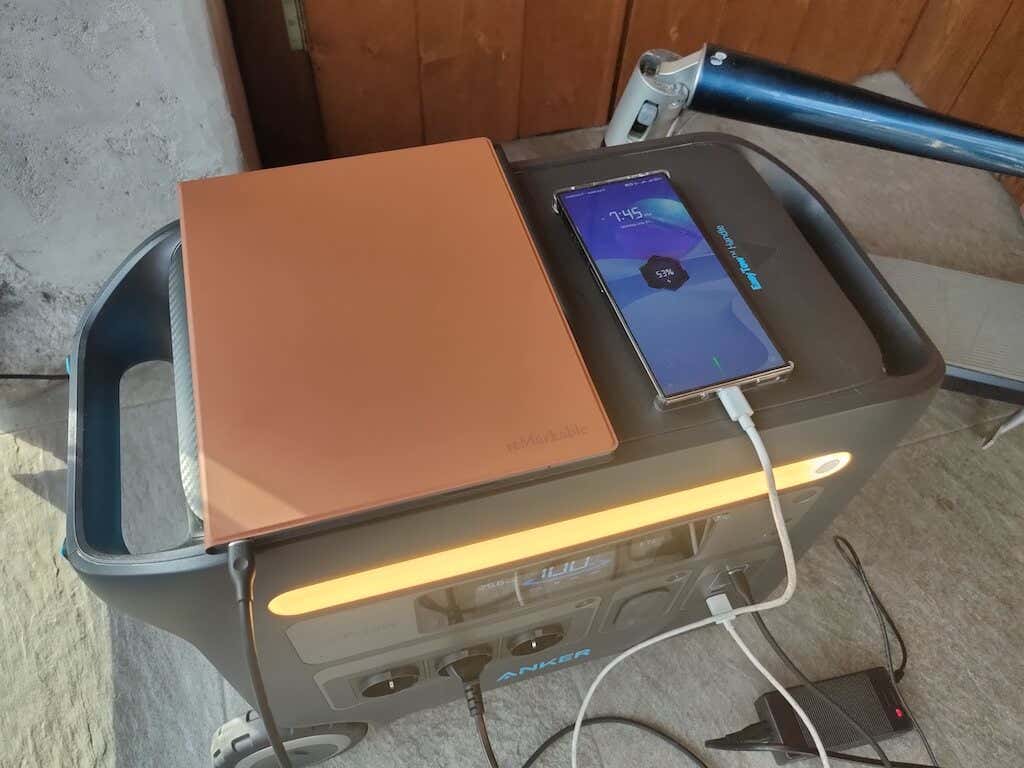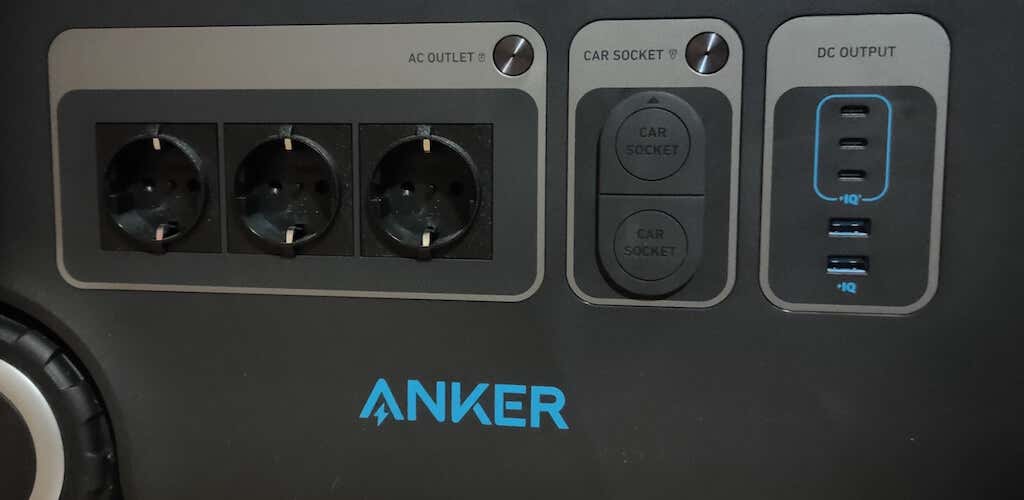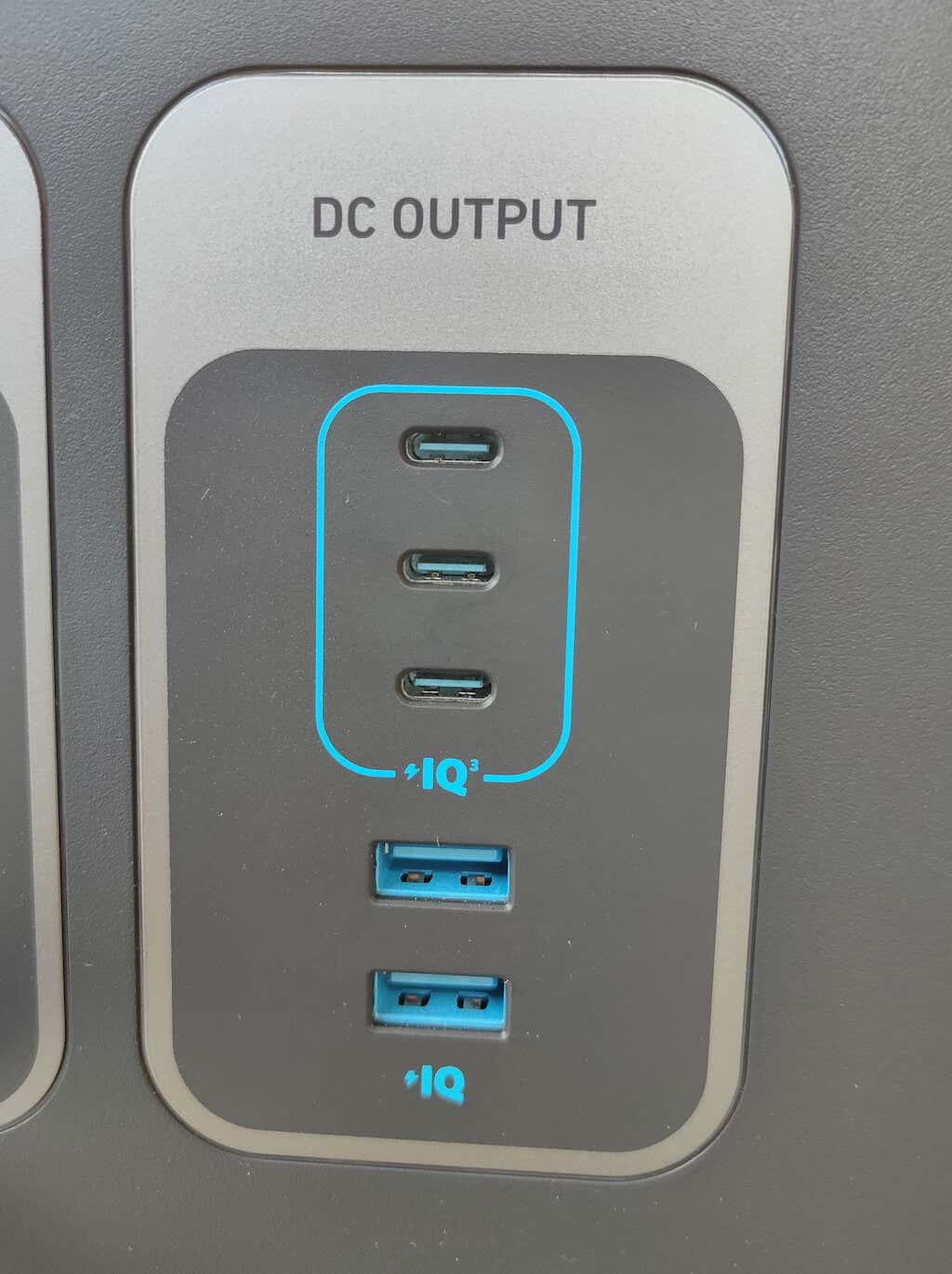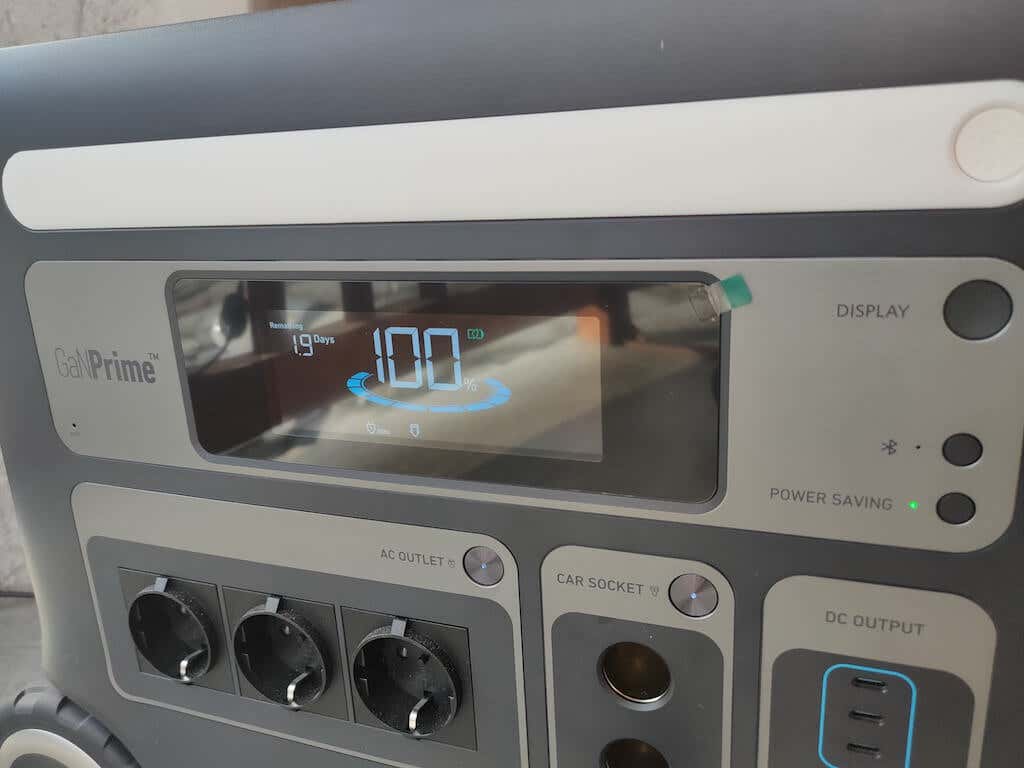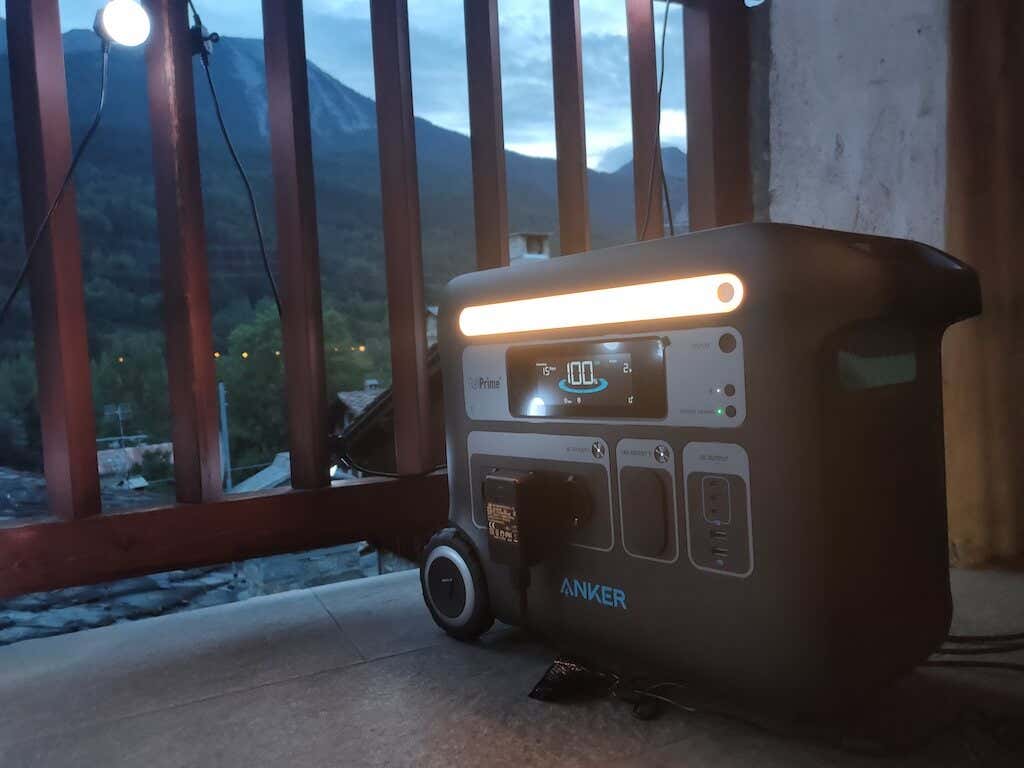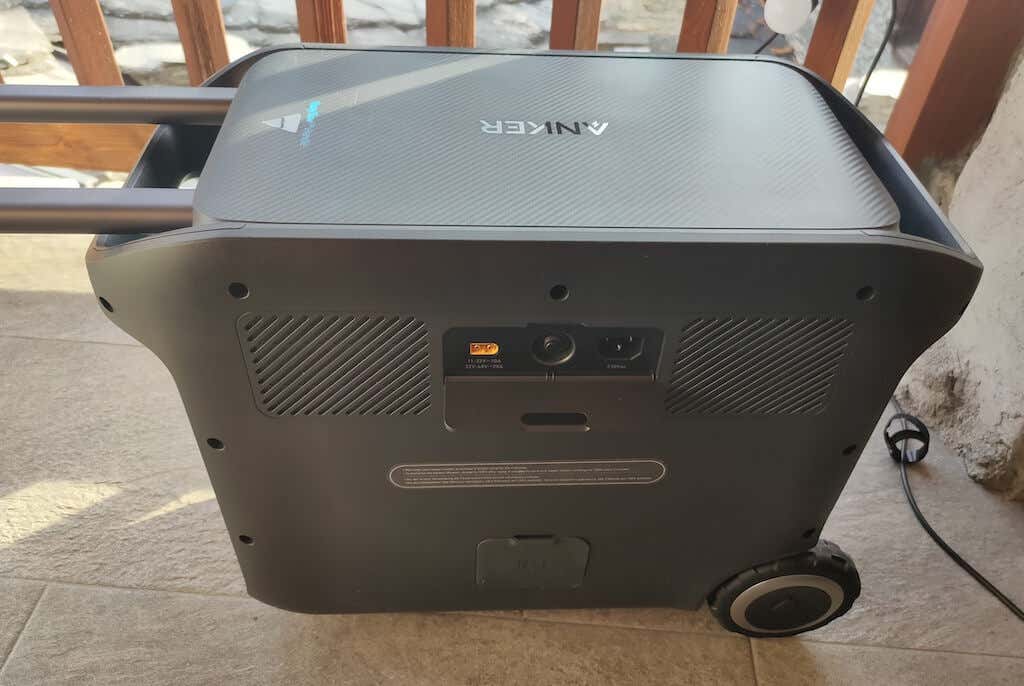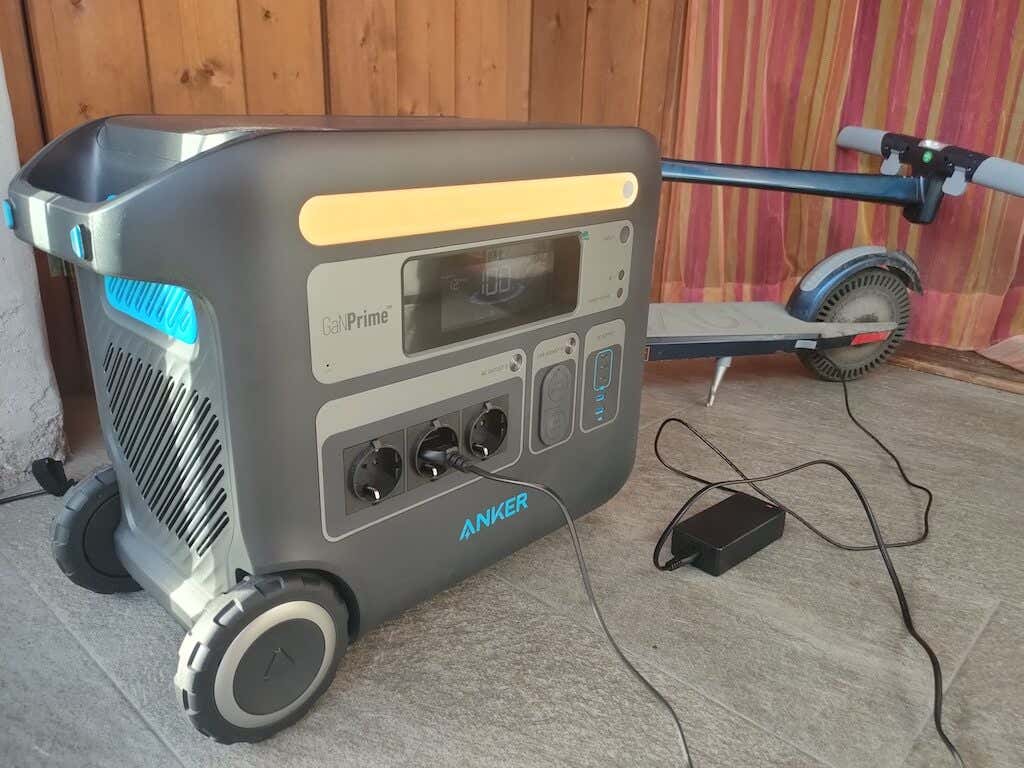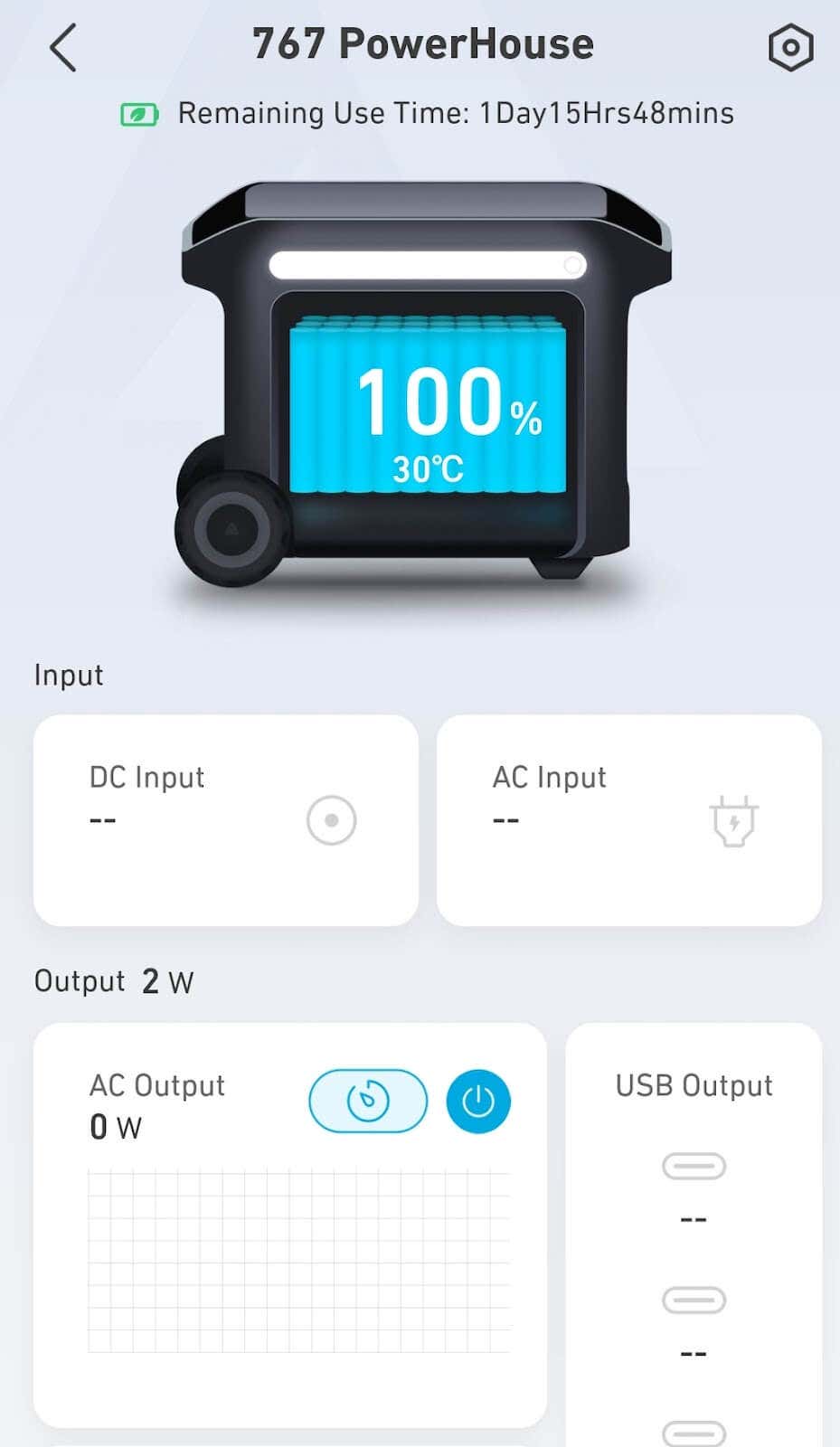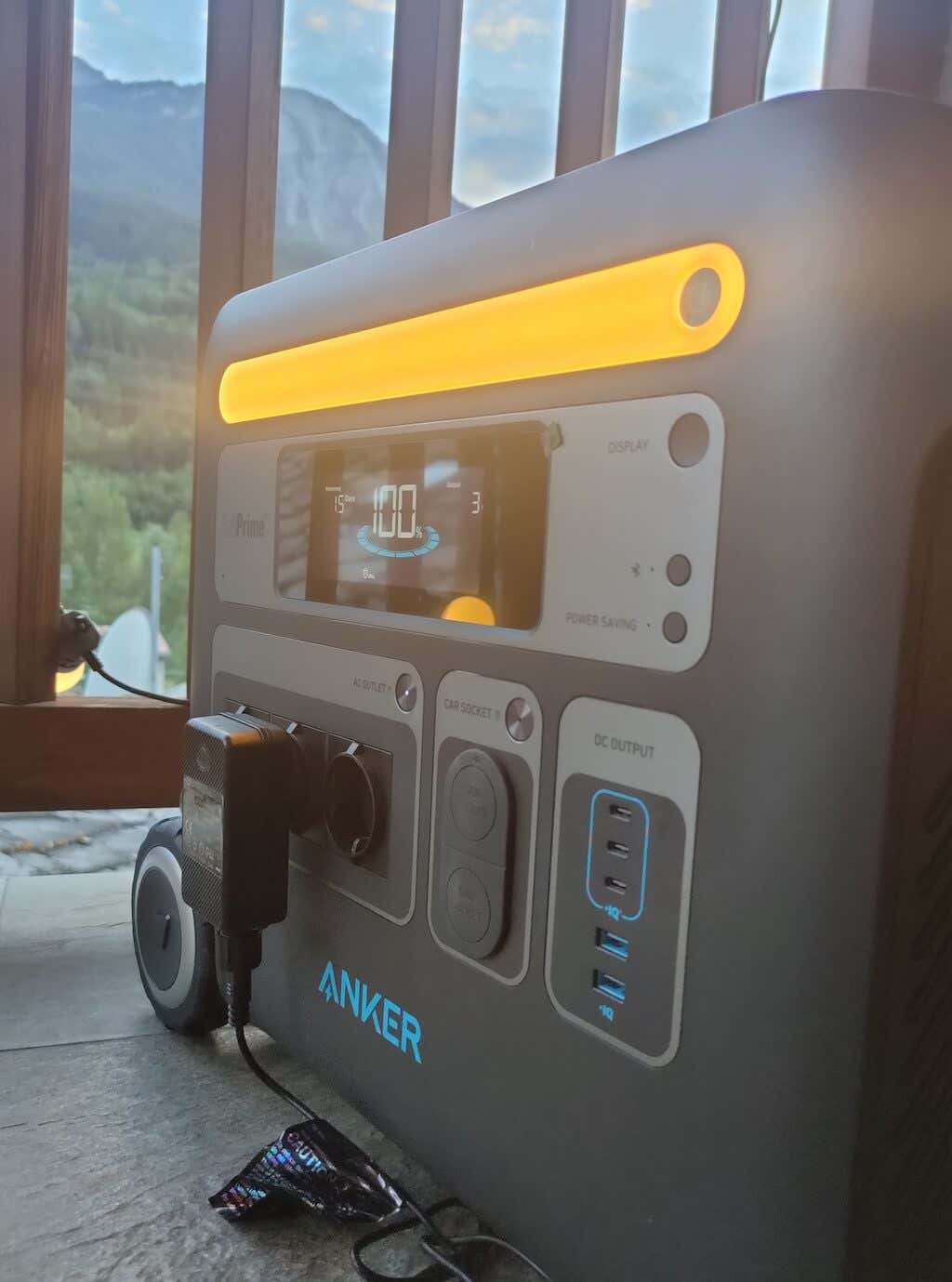A lot of power, but big and heavy
Are you searching for a portable power station that can keep your devices charged during your outdoor escapades, camping trips, or unforeseen power outages? Look no further.
In this power station review, we’ll look at the latest power beast by Anker – the PowerHouse 767 (or SOLIX F2000) – a robust and high-capacity power pack with lightning-fast charging, smart features, and a durable design.
With its efficient Gallium Nitride electronics, expandable battery capacity, and plenty of charging ports, the PowerHouse 767 is a true powerhouse that promises uninterrupted energy to keep your gadgets running. Join us as we explore its features, performance, and why it stands out among the competition.
Anker PowerHouse 767 Portable Power Station: First Impressions & Specs
The Anker 767 PowerHouse is a powerful and reliable portable power station that ensures you stay charged and connected during outdoor adventures or unexpected power outages.
With a capacity of 2048Wh, this power station can keep your essential devices running for extended periods. It’s hard to imagine a better companion for camping trips or emergency situations at home like a blackout. The 2400W AC inverter provides enough power to run a wide range of appliances, including laptops and power tools.
Before we continue with the review, let’s have a look at the full list of tech specifications of the Anker PowerHouse 767:
- Dimensions: 20.6 x 15.5 x 9.8 in (525 x 395 x 250 mm)
- Weight: 67 lbs (30.5 kg)
- Capacity: 2048Wh
- AC Output (Inverter Mode): 120V~ 20A Max, 60Hz, 2400W Max
- AC Output (Bypass Mode): 120V~ 12A Max, 60Hz, 1440W Max
- USB-C Output: 5V⎓3A/ 9V⎓3A/ 15V⎓3A/ 20V⎓3A/ 20V⎓5A (100W Max Per Port)
- USB-A Output: 5V⎓2.4A (2.4A Max Per Port)
- Car Charger Output: 12V⎓10A
- AC Input Voltage (Charging): 1440W Max
- Solar Panel Input: XT60 – 11-32V⎓ 10A; XT60 – 32V-60V⎓ 20A (1000W Max)
- Battery: LFP (LiFePO4) Battery
- Recharge Time via AC: 1.4 hours
- Environmental Operation Temperature: Discharging Temperature: -4°F-104°F / -20°C-40°C, Charging Temperature: 32°F-104°F / 0°C-40°C
- Warranty: 5 Years
- Price: $1999 on the official website or $2199 on Amazon.
Thanks to its LFP (LiFePO4) battery technology, the Anker 767 PowerHouse is a reliable and safe choice. It allows for over 3000 charge cycles, so you don’t have to worry about the battery dying any time soon.
There’s no doubt that the 767 PowerHouse is extremely powerful, but it’s also convenient and portable. Unlike traditional generators, which emit noise and fumes, this battery-powered station operates almost silently, making it suitable for indoor use as well. The only sound you will hear occasionally (mostly when you’re charging your station) is the cooling fans, which activate when the power station is connected to high-power devices.
While this is a portable power station, it’s one of the biggest ones I’ve seen. Weighing 67 pounds, it’s undoubtedly heavy, but Anker has integrated thoughtful features to make it easier to move around. Like a suitcase, the PowerHouse 767 comes equipped with a telescoping handle that extends from the side, allowing you to roll it around on its pair of 4.72-inch wheels.
These wheels can handle small obstacles and abrupt flooring transitions.
Still, carrying the PowerHouse 767 up or down a flight of stairs might prove more challenging due to its weight. To address this, Anker has included oversized, sturdy handles on each side, providing a secure grip for lifting.
If you’re not strong, this may still prove to be a problem, considering the weight of the power station. The 767 is designed to be durable and impact-resistant, but it’s important to exercise caution during handling to prevent any accidents. I’d recommend having a second person to assist with carrying the station upstairs or downstairs to prevent any incidents.
Design and Unpacking
We already touched on the size and dimensions of this monster, but what about the overall look and design of the station?
What’s in the Box
Here’s everything you’ll find when unboxing your Anker PowerHouse 767:
- Anker SOLIX F2000 (PowerHouse 767) power station
- AC charging cable
- Car charging cable
- 5-port solar charging connector
- Accessories bag
- User manual
The top surface of the device is flat and handy when you need to place your devices on it while charging.
On the front panel, you’ll find a wide array of outlets and ports, providing various charging options for your devices. There are three AC outlets (on the US version), you’ll find the four AC outlets with a TT-30R outlet specially designed for connecting to recreational vehicles (RVs), a pair of 12V car socket outlets, three USB-C ports, and two USB-A ports.
The USB-C ports deliver an impressive 100W maximum output, allowing you to quickly charge larger electronics such as laptops.
The USB ports feature smart functionality, which means they charge the device automatically when it’s plugged in and shut down once the power is at 100%. The other outlets can be activated with a button press, and they will automatically turn off after 15 minutes if the connected device is not drawing any power. This clever feature helps optimize the PowerHouse 767’s battery life and ensures efficient power management.
Above the outlets, there’s a large LCD screen that displays the remaining charge level as a percentage, along with a semi-circle of power bars that gradually disappear to represent the remaining battery capacity.
The screen also shows icons indicating which outlets are currently in use, as well as an estimate of the remaining runtime based on the current power draw. While these estimates may not be accurate as they depend on various charging conditions, it’s still helpful to have them on display.
The front side of the PowerHouse 767 also features a long LED light strip that can be activated manually with a button press or controlled through the Anker mobile app via Bluetooth. The light strip has three levels of illumination and can even flash S.O.S. in emergency situations.
On the back of the PowerHouse 767, behind a hinged panel, you’ll find a reset button, a port for optional solar panels, and a NEMA-style power cable port (included) similar to those used for powering most desktop PCs.
Optional Extras
Aside from the power station itself, Anker offers several optional extras that enhance the station’s functionality.
- Expansion Battery. If you’re looking for an even higher-capacity power source, Anker offers an expansion battery compatible with the PowerHouse 767. By adding this expansion battery to the power station, you can effectively double the battery capacity, reaching an impressive 4096Wh (2048Wh + 2048Wh). This upgrade is particularly useful for extended camping trips, prolonged power outages, or situations where you need a substantial backup power supply.
- Solar Panels. Anker also provides optional solar panels compatible with the PowerHouse 767, which turn it into a full-on portable solar generator. Connecting solar panels to the port on the back of the power station allows you to recharge it using solar power. So you can make it an eco-friendly and cost-effective power source for outdoor adventures in a van or camper, or off-grid living.
Performance & Features
The Anker PowerHouse 767 delivers excellent performance and comes with a range of useful features that make it stand out as a reliable portable power station.
- Fast Charging and Versatile Outputs
The PowerHouse 767 is equipped with an impressive inverter that offers 2400W of AC output power and 3200W of surge power. Needless to say, this station is capable of running various appliances, not just a power bank, including power-hungry tools and devices. It features three 100W USB-C ports, ideal for charging laptops and other high-powered gadgets. Furthermore, there are three AC outlets and two 12V car sockets, providing flexibility in powering different devices.
- Efficient Charging Options
The PowerHouse 767 can be charged using multiple methods, including AC mains, solar panels, and car chargers. Charging time from the mains is exceptionally fast and impressive, going from 0% to 80% in just over 50 minutes.
With solar panels (up to 1000W maximum solar input), the power station can be charged from 0 to 100% in about 2.5 hours, which is a great off-grid charging solution.
- Gallium Nitride Technology and Longevity
The PowerHouse 767 uses Gallium Nitride electronics and GaNPrime (or GaN) technology, which are also responsible for ultrafast and efficient charging from the mains. These electronics help with temperature control during heavy charging and save energy during the charging process. The use of industrial-grade electronic components ensures its longevity. Anker claims this beast of a power station can withstand up to six times more charge/discharge cycles compared to standard components.
- Smart Display and Control
The power station features a clear LCD display that shows essential information, such as input and output power, remaining battery capacity, and estimated charging and discharging times. It also displays alarms and indicates when the ECO power-saving mode is active, which automatically turns off all sockets after 15 minutes of inactivity to conserve power.
Compared to the Anker 757 which I previously reviewed, the successor 767 is a bigger, stronger, and even more convenient solution to your power needs.
App and Connectivity
Since the 767 is pretty heavy, I found it a blessing that Anker offers a dedicated mobile app that allows controlling the power station remotely. The power station doesn’t have built-in Wi-Fi capabilities, but it offers seamless connectivity through the app via Bluetooth.
To set it up, you need to turn the Bluetooth on your smartphone and long-press the Bluetooth connectivity button on the station. When it starts blinking, it’s ready to connect. Download the Anker app on your smartphone, and sync it with your 767.
The Anker app allows you to monitor and control the power station remotely. You can check the battery status, track power usage, and receive alerts for low battery.
The app also allows you to control the power saving mode and lets you customize the LED light strip and set it to SOS mode in case of emergency. The app is very straightforward and not overcrowded with various elements.
Battery Life
When it comes to battery life, the Anker PowerHouse 767 excels. It charges quickly when connected to a wall outlet, taking under two hours to reach its full capacity. Anker proudly claims that with just one hour of access to AC power, the PowerHouse 767 can achieve an impressive 80% capacity.
The power station features advanced LiFePO4 batteries known for their reliability and long lifespan, capable of enduring up to 3,000 charge cycles. To provide additional peace of mind, Anker offers a generous 5-year warranty, ensuring customers can rely on the PowerHouse 767 for years to come.
Anker has also prioritized durability with a “Unibody drop-proof design,” making the power station resistant to knocks and bumps. However, it’s worth noting that the PowerHouse 767 does not have a weatherproof rating and not even the protective cover that was present with the 757 model, so it’s best to protect it from harsh weather conditions.
Should You Buy the Anker PowerHouse 767?
Anker SOLIX F2000 (PowerHouse 767) is an excellent high-capacity fast-charging power station. If you want a power station that you can take with you on camping trips or use as an emergency power service at home, which is also easy to use and safe and durable, the 767 is one of the best options for you.
At the same time, if you’re short on space and want something truly portable, the 767 may not be the ideal model for your household. It’s big and heavy, but you get safety and a lot of power in return.
All in all, I’d personally recommend getting the Anker 767 even as your first portable power station. It’ll definitely bring you peace of mind, and you’ll never worry about running out of power on the go again.

